Since 2004, I have maintained a small project studio in my home for film scoring, song writing, and jingle work. What started off as a Korg M1 keyboard and a Macintosh Classic has “blossomed” into a full-featured composer’s suite, with an array of synthesizers, samplers, and drum machines, all run by a 12-year old Power Macintosh 9600 and Opcode Studio Vision Software.

When we moved into our new home, I was allowed (I’m married) to use a small workspace nestled into the back of our garage.
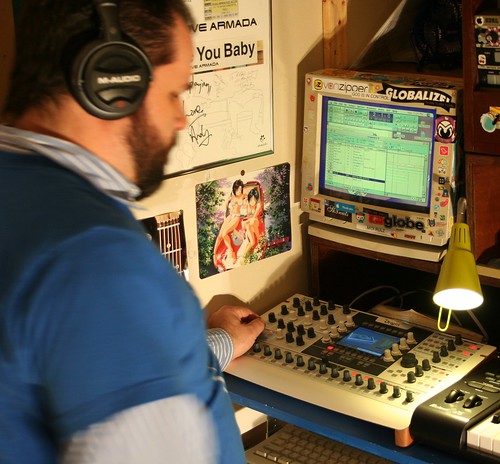
The only rub with this is, that my garage is not insulated. I live in Texas, and while the winters are mild, the summers are hot and the garage studio was unbearable last year. I took a small cadre of instruments into the living room last year, but my wife suggested that this summer I make it more permanent.
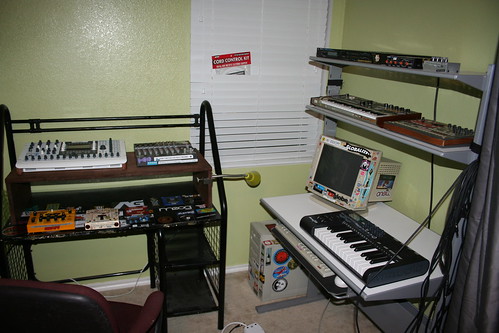
We have a large bedroom, and a good portion of the space in there was underutilized. My wife suggested we construct a curtain as a divider. Once that was finished, I started moving my instruments in. While the space isn’t huge, it did give me an option to set up two stations, Vangelis style, as opposed to the vertical storage system which I had been using in the garage.
On the right hand side is where I put the M-Audio Axiom 25 keyboard, as well as the CRT monitor for the mac.
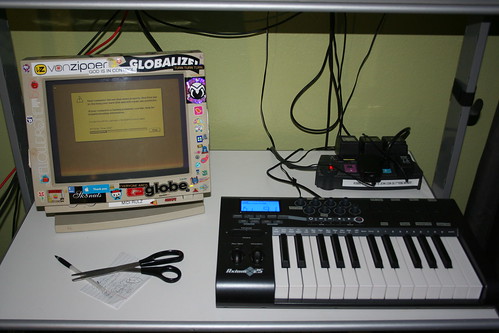
The new desk I acquired for the room could not accommodate the tower, so that was put to the left side, in between the two desks.
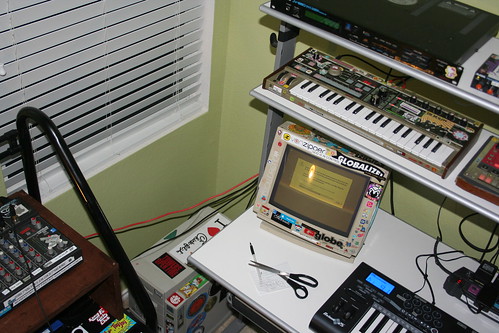
I recently acquired some extra long MIDI cables, so I used those to add instruments to the shelves above my monitor and keyboard.
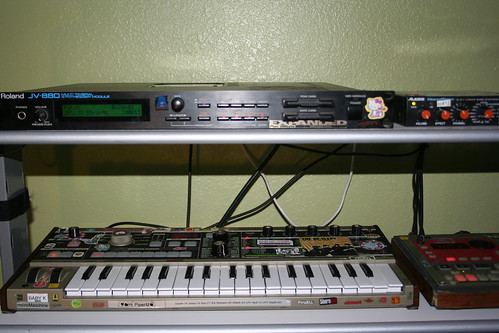
On the left is a Roland JV880, a sample playback synth that is very useful for bread and butter sampled sounds such as pianos and strings, and a full complement of orchestral sounds. To the right is a small module called a Nanobass made by Alesis. It has a wide variety of both sampled acoustic, electric, and synth basses.
It also frees up your other synths to do things besides basslines.
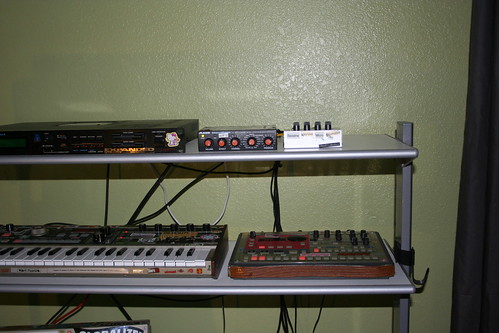
Below that is a microKorg which was my first VA (Virtual Analogue) synthesizer which is great for leads, sequences, pads, and basses, as well as a vocoder. To the right is the Korg Electribe ER-1, a virtual analogue drum machine that includes sampled cymbals. The ER-1 was unfairly marketed as a 909 clone when it was released, but it is so much more than that. It has a wide variety of kicks, snares, and percussion that cut through a mix and have their own built-in digital delay.
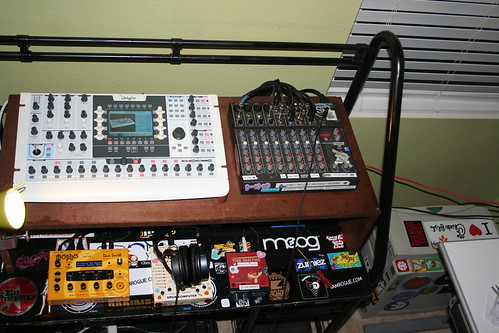
On the left desk is my Arturia Origin, a modular synthesizer that is a self contained desktop unit. Inside are the capabilities of routing oscillators from a variety of classic synthesizers such as the Moog miniMoog and Roland Jupiter 8 to a variety of different filters to create any imaginable synth sound. The mixer to the right is a Mackie 1202, which has served me well over the years.
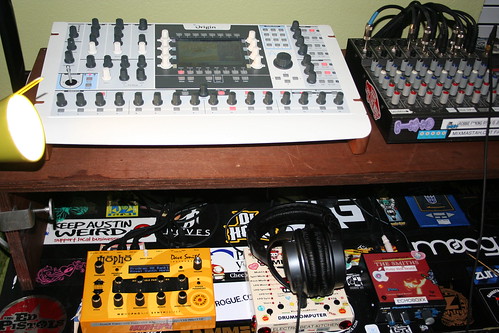
Below deck from left to right, is a Dave Smith Instruments Mopho, a true monophonic analogue synth that is a descendant of the Sequential Circuits Pro One. Thanks to modern technology, its analogue circuits and Curtis filters now fit in a small tabletop box and offer a wide variety of leads, basses, and percussive sounds at the click of the button or twist of a knob. To the right is the Jomox Mbase 01, which is a monophonic synth dedicated only to bass drums. It does the smallest, tightest kicks, to the huge TR808 and 909 bass drums, and since it’s a true analogue circuit, sometimes the oscillators drift just like the real drum boxes of yesteryear.
Finally on the table is the Alesis Picoverb, which handles all the effects that the modules themselves don’t do. Its digital delay and reverbs are fine for my needs, which are minimal.

Finally, we have the rack at the bottom of the left desk which includes an Akai S900 digital sampler, whose 12 bit quality sample rate gives drums and percussion a gritty, fantastic vibe. Below that is a Roland R8M PCM drum module, which has a variety of kicks, snares, and toms, as well as a bunch of different electronic percussion and FX sounds, thanks to the 3 cards it has nestled in its front panel.
On the bottom is the heart of the system, an Opcode Studio 5lx MIDI processing unit (which actually has its own “brain” for routing of 256 possible MIDI channels.) This, combined with my Power Macintosh 9600, and Opcode’s Studio Vision software, enable me to have a computer dedicated only to sequencing.
You might ask, why all the old crap? Why are you running everything with hardware instead of software synthesizers? The answer is, I like this. I like having everything in a physical space, unencumbered by USB transmit rates and slow CPUs. I like being able to reach for a knob and change anything I like. As long as manufacturers continue to equip their instruments with MIDI ports, I’ll be able to use any new instrument that comes along, as well as classic modules from the past. With the combination of true analogue synthesis, virtual analogue, and samples and sample playback, I can create a rich tapestry of sound that should service me for years to come.
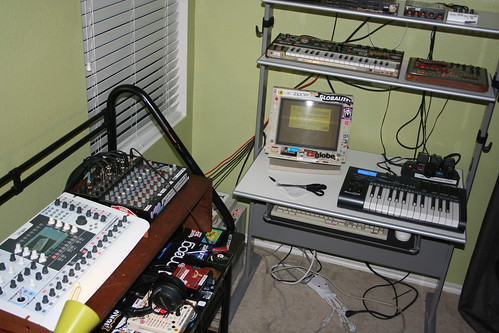

2 comments:
Looks like a great space for disappearing into synthmusicland. Looking forward to hearing new tracks!
It was fun to see all the gear and the studio set up :) Cool stuff!
Post a Comment